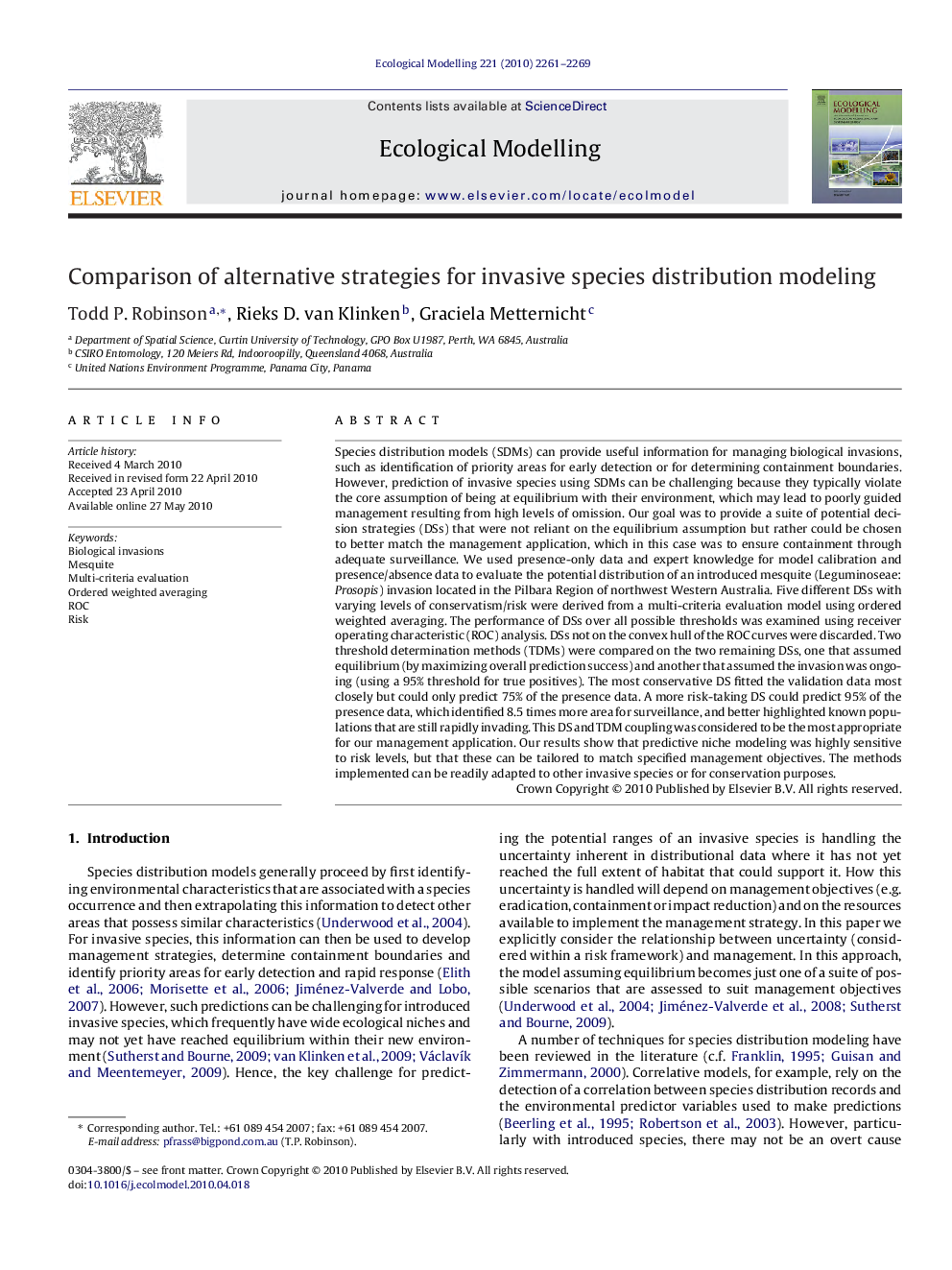| کد مقاله | کد نشریه | سال انتشار | مقاله انگلیسی | نسخه تمام متن |
|---|---|---|---|---|
| 4377216 | 1303415 | 2010 | 9 صفحه PDF | دانلود رایگان |

Species distribution models (SDMs) can provide useful information for managing biological invasions, such as identification of priority areas for early detection or for determining containment boundaries. However, prediction of invasive species using SDMs can be challenging because they typically violate the core assumption of being at equilibrium with their environment, which may lead to poorly guided management resulting from high levels of omission. Our goal was to provide a suite of potential decision strategies (DSs) that were not reliant on the equilibrium assumption but rather could be chosen to better match the management application, which in this case was to ensure containment through adequate surveillance. We used presence-only data and expert knowledge for model calibration and presence/absence data to evaluate the potential distribution of an introduced mesquite (Leguminoseae: Prosopis) invasion located in the Pilbara Region of northwest Western Australia. Five different DSs with varying levels of conservatism/risk were derived from a multi-criteria evaluation model using ordered weighted averaging. The performance of DSs over all possible thresholds was examined using receiver operating characteristic (ROC) analysis. DSs not on the convex hull of the ROC curves were discarded. Two threshold determination methods (TDMs) were compared on the two remaining DSs, one that assumed equilibrium (by maximizing overall prediction success) and another that assumed the invasion was ongoing (using a 95% threshold for true positives). The most conservative DS fitted the validation data most closely but could only predict 75% of the presence data. A more risk-taking DS could predict 95% of the presence data, which identified 8.5 times more area for surveillance, and better highlighted known populations that are still rapidly invading. This DS and TDM coupling was considered to be the most appropriate for our management application. Our results show that predictive niche modeling was highly sensitive to risk levels, but that these can be tailored to match specified management objectives. The methods implemented can be readily adapted to other invasive species or for conservation purposes.
Journal: Ecological Modelling - Volume 221, Issue 19, 24 September 2010, Pages 2261–2269